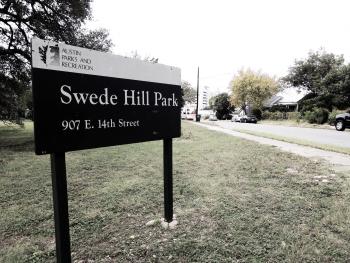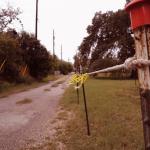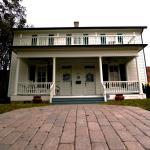History... Swede Hill neighborhood is a residential area of downtown Austin, Texas, that was once a former Swedish enclave. Development of this area began in the 1870s when a large number of Swedish immigrants erected homes near their downtown businesses. The first to build his home there was S. A. Lundell; soon thereafter Carl John Swahn built his house there, and many others followed. Eventually some sixty-seven Swedish immigrant families built homes in the vicinity and the neighborhood became known as Svenska Kullen (Swedish Hill)—originally bounded by Waller Street on the east, Red River Street on the west, 15th Street on the south, and 19th Street on the north (today Martin Luther King, Jr. Boulevard)—known more familiarly as Swede Hill.
Original owners and residents included carpenters, steamship ticket agents, book dealers, custodians, landscapers, as well as many others. The first Swedish Methodist church in Texas was organized in Austin, and shortly afterward its congregation built a church at 15th and Red River streets in Swede Hill. Other Swedish churches were established near the area, and soon Texas Wesleyan College (founded by Swedish Methodists) was established in the vicinity at 26th and Red River streets, just north of the present-day University of Texas. Over time, urban development—most notably the construction of IH-35 and the Frank Erwin Center—shrunk the size of the community dramatically. By the 1980s only the portion of Swede Hill east of IH-35 remained intact as a neighborhood.
In 1986, a portion of what remained of the neighborhood was designated and added to the National Register of Historic Places. By the late 1980s two houses in Swede Hill—Blomquist and Anderson homes—had been designated by the City of Austin as historic structures. [1] Today, the Swede Hill neighborhood boundaries have expanded to 12th Street on the south, and to Comal Street on the east. Architecture within the neighborhood ranges from original historic structures to newer contemporary designs, and the community is comprised of an eclectic mix of families, professionals, artists, students, and urban dwellers. Swedish Hill Historic District National Register of Historic Places [#86001008] Excerpts from the 1986 Nomination... The Swedish Hill Historic District consists of a small neighborhood of houses which fronts on the 900 block and a portion of the 1000 block of East 14th Street and on the 900 block of East 15th Street. Olander Street forms the western boundary of the District, and Waller Street cuts through it on the east... selected on the basis of the intactness and cohesiveness of the residential structures.
Description: The Swedish Hill Historic District, situated in the northwestern part of historic East Austin along East 14th and 15th, Olander, and Waller streets, is comprised of 12 residential buildings, 9 of which contribute to the District and 2 of which do not. Approximately 50% of the buildings are owner occupied; without exception, the structures are well maintained and in a remarkable state of preservation. The houses were constructed between ca. 1880 and ca. 1938; there are representatives in the district of construction during every decade during that 58-year span and of most of the architectural styles present in East Austin as a whole. The structures demonstrate a consistence of setback, landscape, scale, and materials, and a craftsmanship and state of preservation which is unusual in the area. Architectural styles which are represented in the District are vernacular versions of the Victorian L plan, T plan, Cumberland plan, late Victorian corner-porch plan, Pyramidal plan, and Bungalow plan. All of the buildings are finely detailed; many display pleasing carpentry ornamentation in the forms of porch columns, balusters, railings, brackets, spindles, and a variety of siding and shingling types.
Significance: Architecture Located on lots in the Original City of Austin and subdivided and developed earlier than most other parts of East Austin, Swedish Hill was a residential neighborhood occupied by downtown business people and tradesmen. Its significance derives not only from the broad range of architectural styles which is represented in the District, but also from the fact that each building is an excellent example of its own particular style. Architectural details are complete, and in many cases original plans have not been obscured by later additions. As a result, the Swedish Hill Historic District is the best example in East Austin of a late nineteenth- and early twentieth-century, residential neighborhood which remains intact. http://www.swedehill.org/history.html [1] Sources: Texas Historical Commission; National Park Service; History of Travis County and Austin, 1839-1899, Mary Starr Barkley (Waco: Texian Press, 1963); Historic Austin: A Collection of Walking/Driving Tours, Sharon Edgar Greenhill, (Austin: Heritage Society of Austin, 1981); Waterloo Scrapbook, Katherine Hart: 1973-74 (Aus
Location
Swede Hill Park
907 E 14TH
Austin, TX, 78702





Social Media